This article was co-authored by Monica Kieu, DO, FACS. Dr. Monica Kieu is a board certified Otolaryngologist and Specialist in Facial Plastic and Reconstructive Surgery in Los Angeles, California. Dr. Kieu received a BS in Anthropology from the University of California, Riverside and earned her medical degree (DO), with honors, from Western University of Health Sciences in Pomona. She then completed her residency in Otolaryngology-Head and Neck Surgery at Michigan State University/Detroit Medical Center, where she served as chief resident. Dr. Kieu also completed a prestigious fellowship in Facial Plastic and Reconstructive Surgery at the University of Toronto. She is a member of the American Academy of Otolaryngology-Head and Neck Surgery, American Osteopathic Colleges of Ophthalmology and Otolaryngology-Head and Neck Surgery, American Academy of Cosmetic Surgery, American Academy of Facial Plastic and Reconstructive Surgery, and the American Rhinologic Society. Dr. Kieu was recently named one of LA’s Top Docs by Los Angeles Magazine.
There are 10 references cited in this article, which can be found at the bottom of the page.
wikiHow marks an article as reader-approved once it receives enough positive feedback. In this case, 90% of readers who voted found the article helpful, earning it our reader-approved status.
This article has been viewed 6,435,072 times.
Earwax is a common and natural cause of clogged ears, ear infections, swimmers ear and many other things.[1] There are different ways of unclogging a clogged ear, but it depends on what part of the ear is clogged: outer, middle, or inner. Fortunately, it's possible to unclog all 3 parts!
Steps
How to Unclog the Outer Ear
-
1Make sure you don't have an infection. If you suspect that you have an ear infection, do not attempt the following method to unclog your ear. Call a doctor immediately if you have any of the following symptoms:[2]
- Persistent and severe pain in your ears lasting more than a few hours.
- An itchy ear
- Yellow or green drainage from the ear.
-
2Mix a wax-softening solution. You can purchase a solution at the drugstore to soften Earwax, or you canmake your own at home.The upside to mixing it yourself is that you probably already have the ingredients you need.[3]
How to Make a Wax-Softening Solution
Combine warm water with one of the following:
A few drops of baby or mineral oil
A few drops of glycerin
Hydrogen peroxide (3%): No stronger than 3%, or else you might damage your ear. Mix in equal parts hydrogen peroxide and water.Advertisement -
3Keep the solution lukewarm. Putting water that's too hot or cold into your ear can cause dizziness or vertigo.
How to Test the Temperature of Water
Dip your (clean) finger into the water. If you don't notice a huge temperature difference in either direction, the solution is perfect.
If it’s too hot: Allow a solution that's too warm to cool for 1-2 minutes before pouring it into your ear. Be sure to retest the temperature before using it.
If it’s too cold: If your solution has cooled too much, warm it up by adding a little bit of hot water, or by putting it in the microwave for 10 to 15 seconds. Retest the temperature before using it. -
4Lie down on your side. Enlist gravity's help by lying so that the ear you want to drain is facing the ceiling. Put a towel beneath your head to catch any excess solution that spills out of your ear.
- This position is easier if you have someone to help youpour the solution into your ear.
- If you can't lie down, tilt your head to the side as much as you can. You should get nearly the same effect.
- This position is
-
5Straighten your ear canal. This will make it easier for the solution to get into your ear.Grab the outer edge of your ear, by the lobe, then pull it gently outward.Your earlobe should be perpendicular to your neck.
-
6Pour the solution into your ear canal. Use an eye dropper or rubber bulb syringe to insert about5-6 dropsof the solution. Hold the eye dropper or rubber bulb syringe above your ear canal, not inside it.[4]
-
7Remain lying down for 10 to 15 minutes. This gives the solution time to break up the wax.[5]
- If you used peroxide, don't be alarmed if you hear it bubbling in your ear. When the bubbling stops, you're ready to drain.
- If you used peroxide, don't be alarmed if you hear it bubbling in your ear.
-
8Drain your ear. Place an empty bowl beneath your ear, and turn your head so that the canal drains into the bowl.
- To drain completely, pull your earlobe to straighten your ear canal (as in Step 4).
-
9Irrigate again (optional). If your ear still feels blocked,repeat the irrigation process.If you've done it 3 times and you still feel blocked, look at another method section in this article or contact a doctor.
-
10Dry your ear. Gently drying your ear once the wax is out cleans up any excess solution or wax. You can do it a few different ways.[6]
How to Dry Your Ear
Use soft, light pats with a cloth or paper towel.
Put a handheld blow dryer on low heat and low power, and hold the barrel a few inches away from your ear.
Put a few drops of alcohol into your ear — it'll dry the skin as it evaporates. -
11Seek a doctor's help. If your earwax is so impacted that you can't drain it by yourself, call a doctor and evaluate your options.[7] Additionally, if you experience pain while trying to unclog your ear, see a doctor immediately.
- Your general practitioner can prescribe ear drops that should break up the wax. Use them with care, though — overdo it, and you'll damage your eardrum.
- An ear, nose and throat (ENT) specialist can manually remove earwax with specially designed tools.
How to Unclog Your Middle Ear
-
1Take preventative measures. A blocked middle ear (tympanic cavity) can be the painful consequence of a difference in pressure between your middle and outer ear. Most people experience it at some point. Here's what you can do to stave it off:[8]
- Fly smart. Don't sleep while the plane is descending. Instead, chew gum and try to yawn frequently.Allow small children to nurse or sip on a drink during the descent. Also, don't fly if you have a cold. Otherwise, the descent will be very painful and can cause permanent hearing damage.
- Dive slowly. If you're going scuba diving, descend and ascend at a slow rate.Give yourself plenty of time to readjust to the new pressure. Avoid diving if you have a cold or respiratory infection.
- Fly smart. Don't sleep while the plane is descending. Instead,
-
2
-
3Treat your cold. The membranes in your Eustachian tubes, which connect your ear to the back of your throat, are the same as the membranes in your nose. As such, they can swell quickly and severely when you have a cold or seasonal allergies.[11]
-
Take a decongestant or antihistamine.It should ease up the inflammation of the membranes. You can take it orally or in a nasal spray.
- Rest up and recover. Doing everything you can to combat the cold will help your Eustachian tubes open up more quickly.
-
-
4Put a warm compress on your ear. Lie on your side, and put a washcloth soaked in hot water or a heating pad over your ear. It should help ease the pain.[12]
- Put a towel between the heating pad and your ear to avoid burning your face.
- Don't sleep with an electric heating pad over your ear, as this can cause facial burns. Additionally, electric heating pads can be a fire hazard.
-
5See a doctor if the pain persists. Ear infections can lead to long-term complications if it's severe and left untreated. If you're experiencing the following symptoms, seek medical help immediately:
- Severe pain
- Discharge of pus
- Bleeding from the ear
- Fever
- Severe dizziness
- Severe headaches or head pain
How to Treat an Inner Ear Clog
-
1Recognize the symptoms of inner ear issues. Dealing with an inner ear clog is harder than outer and middle ear clogs. Inner ear issues are oftencaused by inflammation or an infection.However, you can gain relief. If you suspect you have an inner ear clog, look for these symptoms:[13]
- Earache
- Dizziness
- Head spinning
- Balance issues
- Nausea
- Vomiting
- Hearing loss
- Ringing in your ears
-
2See a doctor immediately. Your doctor will examine your ear to make a diagnosis. If you do have an inner ear infection, then they'll be able toprescribe medication to treat it.With treatment, your infection should be gone in about2 weeks.
-
3Take the medication prescribed by your doctor. Your doctor may prescribe antibiotic or antiviral ear drops to treat your infection. They may also recommend that you take an over-the-counter painkiller, such as ibuprofen. In some cases, they may give you steroids to treat the inflammation in your ear.
- If you're experiencing nausea, the doctor may also give you anti-nausea medicine.
Expert Q&A
Did you know you can get expert answers for this article?
Unlock expert answers by supporting wikiHow
-
QuestionHow can I pop my ears?
 Monica Kieu, DO, FACSDr. Monica Kieu is a board certified Otolaryngologist and Specialist in Facial Plastic and Reconstructive Surgery in Los Angeles, California. Dr. Kieu received a BS in Anthropology from the University of California, Riverside and earned her medical degree (DO), with honors, from Western University of Health Sciences in Pomona. She then completed her residency in Otolaryngology-Head and Neck Surgery at Michigan State University/Detroit Medical Center, where she served as chief resident. Dr. Kieu also completed a prestigious fellowship in Facial Plastic and Reconstructive Surgery at the University of Toronto. She is a member of the American Academy of Otolaryngology-Head and Neck Surgery, American Osteopathic Colleges of Ophthalmology and Otolaryngology-Head and Neck Surgery, American Academy of Cosmetic Surgery, American Academy of Facial Plastic and Reconstructive Surgery, and the American Rhinologic Society. Dr. Kieu was recently named one of LA’s Top Docs by Los Angeles Magazine.
Monica Kieu, DO, FACSDr. Monica Kieu is a board certified Otolaryngologist and Specialist in Facial Plastic and Reconstructive Surgery in Los Angeles, California. Dr. Kieu received a BS in Anthropology from the University of California, Riverside and earned her medical degree (DO), with honors, from Western University of Health Sciences in Pomona. She then completed her residency in Otolaryngology-Head and Neck Surgery at Michigan State University/Detroit Medical Center, where she served as chief resident. Dr. Kieu also completed a prestigious fellowship in Facial Plastic and Reconstructive Surgery at the University of Toronto. She is a member of the American Academy of Otolaryngology-Head and Neck Surgery, American Osteopathic Colleges of Ophthalmology and Otolaryngology-Head and Neck Surgery, American Academy of Cosmetic Surgery, American Academy of Facial Plastic and Reconstructive Surgery, and the American Rhinologic Society. Dr. Kieu was recently named one of LA’s Top Docs by Los Angeles Magazine.
Board Certified Otolaryngologist
-
QuestionI had an ear infection for a week; it's gone, but I still can't hear out of either ear! What should I do?
 Marsha Durkin, RNMarsha Durkin is a Registered Nurse and Laboratory Information Specialist for Mercy Hospital and Medical Center in Illinois. She received her Associates Degree in Nursing from Olney Central College in 1987.
Marsha Durkin, RNMarsha Durkin is a Registered Nurse and Laboratory Information Specialist for Mercy Hospital and Medical Center in Illinois. She received her Associates Degree in Nursing from Olney Central College in 1987.
Registered Nurse
-
QuestionMy left ear is clogged. Nothing is working, and I can't see a doctor. What do I do?
 Marsha Durkin, RNMarsha Durkin is a Registered Nurse and Laboratory Information Specialist for Mercy Hospital and Medical Center in Illinois. She received her Associates Degree in Nursing from Olney Central College in 1987.
Marsha Durkin, RNMarsha Durkin is a Registered Nurse and Laboratory Information Specialist for Mercy Hospital and Medical Center in Illinois. She received her Associates Degree in Nursing from Olney Central College in 1987.
Registered Nurse
Warnings
- Never scratch the eardrum with a fingernail to unclog it. You could severely damage your eardrum or your hearing.⧼thumbs_response⧽
- This procedure is intended to remove natural Earwax from ears. If there is a foreign object obstructing an ear, consult a doctor.⧼thumbs_response⧽
- Don't use a waterpik or other mechanized water jet on your ears. You could damage your eardrum permanently.⧼thumbs_response⧽
- If you wear hearing aids, do not put them in until your ears are unclogged and don't have any drops left, especially if your hearing aid is not a BTE with a tube.⧼thumbs_response⧽
- Remember how the old saying goes: "Never stick anything into your ear canal that is smaller than your elbow."⧼thumbs_response⧽
- Do NOT attempt to unclog your ears by yourself if you have a punctured eardrum or tubes in your ears. Seek a doctor's help.⧼thumbs_response⧽
Things You'll Need
- 2 small bowls (one to contain the cleaning solution and fill the dropper, the other to catch the drained solution.)
- Hydrogen peroxide or mineral oil
- Warm water
- Ear or eye dropper (sterile)
- Warm compress
- Decongestants or antihistamines
References
- ↑ https://medlineplus.gov/ency/article/000979.htm
- ↑ Monica Kieu, DO, FACS. Board Certified Otolaryngologist. Expert Interview. 20 October 2020.
- ↑ https://www.mayoclinic.org/diseases-conditions/earwax-blockage/diagnosis-treatment/drc-20353007
- ↑ https://www.health.harvard.edu/staying-healthy/got-an-ear-full
- ↑ https://www.nhs.uk/conditions/earwax-build-up/
- ↑ https://www.mayoclinic.org/diseases-conditions/earwax-blockage/diagnosis-treatment/drc-20353007
- ↑ Monica Kieu, DO, FACS. Board Certified Otolaryngologist. Expert Interview. 20 October 2020.
- ↑ https://www.mayoclinic.org/diseases-conditions/airplane-ear/symptoms-causes/syc-20351701
- ↑ Monica Kieu, DO, FACS. Board Certified Otolaryngologist. Expert Interview. 20 October 2020.
- ↑ https://www.mayoclinic.org/diseases-conditions/airplane-ear/symptoms-causes/syc-20351701
- ↑ https://www.mayoclinic.org/diseases-conditions/common-cold/expert-answers/plugged-ears/faq-20058092
- ↑ https://www.webmd.com/allergies/stuffy-ears-sinuses
- ↑ https://www.webmd.com/brain/vertigo-symptoms-causes-treatment
- ↑ https://my.clevelandclinic.org/health/diseases/14428-ear-wax-buildup--blockage
About This Article
To unclog a clogged ear, make a wax softening solution by combining warm water with a few drops of baby oil or glycerine. Then, lie on your side with the ear you want to drain facing upwards, and a towel under your head to catch any spills. Next, pour a few drops of the solution into your ear using a syringe or eye dropper. Stay lying down for 10 to 15 minutes so the solution has time to break up the wax. Finally, turn your head so the liquid drains into a bowl. For tips on how to unclog your middle ear, read on!
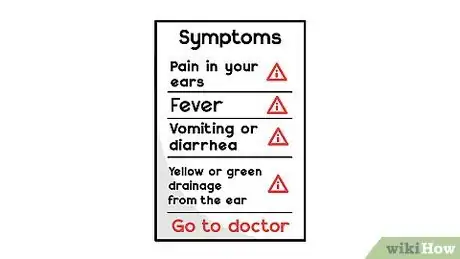




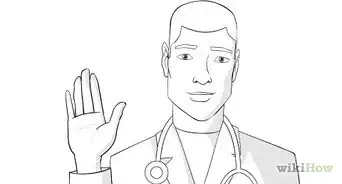
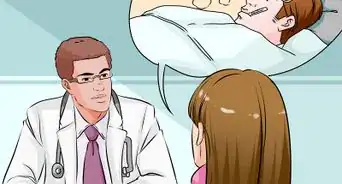





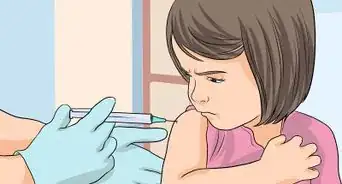

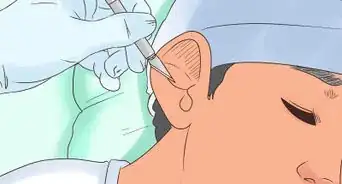
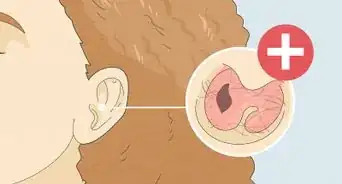
















































Medical Disclaimer
The content of this article is not intended to be a substitute for professional medical advice, examination, diagnosis, or treatment. You should always contact your doctor or other qualified healthcare professional before starting, changing, or stopping any kind of health treatment.
Read More...